- Home
- Prelims
- Mains
- Current Affairs
- Study Materials
- Test Series
14th Nov 2021
LANDSLIPS HIT KOTTAYAM, PATHANAMTHITTA HIGH RANGES
Recently, the eastern high ranges of Kottayam and Pathanamthitta experiences the spell of extreme showers and were hit by a series of landslides.
What is a landslide?
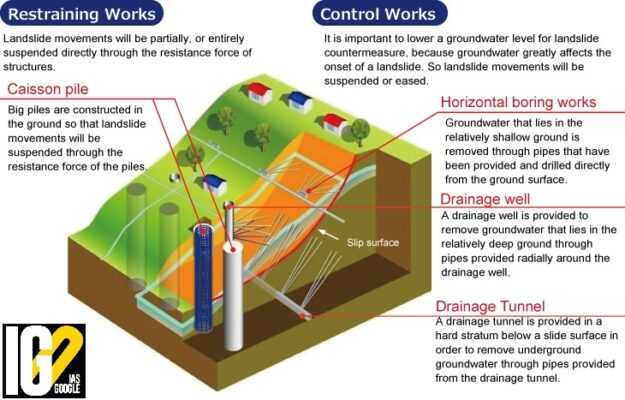
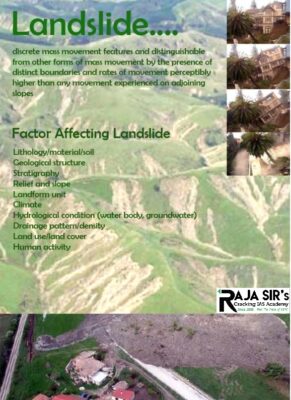
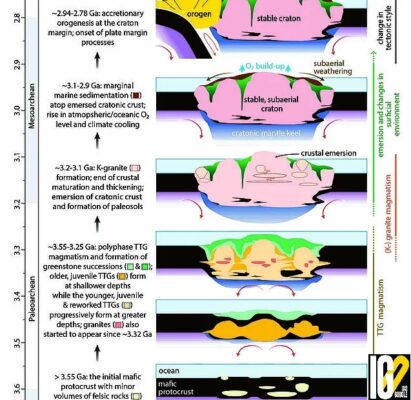
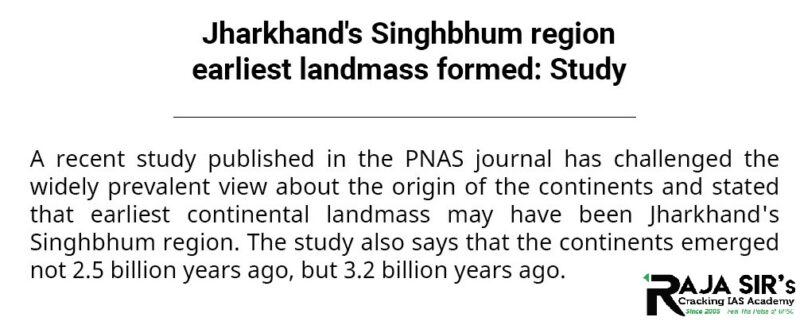

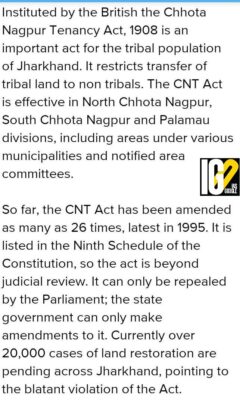
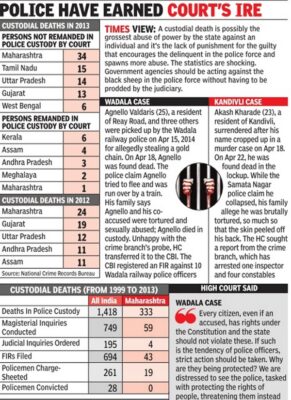
Causes of Custodial Deaths:
Incompetence of State and Judicial Facilities:
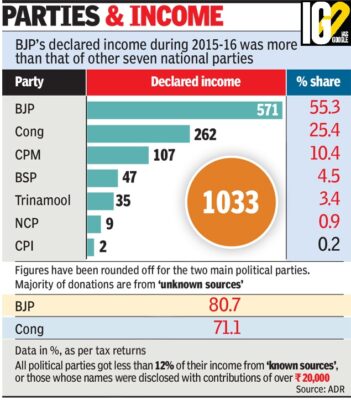


- A landslide is defined as the movement of a mass of rock, debris, or earth down a slope.
- Landslides are a type of “mass wasting,” which denotes any down-slope movement of soil and rock under the direct influence of gravity.
- The term "landslide" encompasses five modes of slope movement: falls, topples, slides, spreads, and flows.
- These modes of slopes are further subdivided by the type of geologic material (bedrock, debris, or earth).
- The landslides types examples are:
- Debris flows
- Sometimes referred to as mudslides, mudflows, lahars, or debris avalanches—are common types of fast-moving landslides.
- Rock falls
- Rockfalls are a newly detached mass of rock falling from a cliff or down a very steep slope.

- Gravity is generally the force driving landslide movement.
- Factors that trigger landslide movement include heavy rainfall, erosion, poor construction practices, freezing and thawing, earthquake shaking, and volcanic eruptions.
- Landslides are typically associated with periods of heavy rainfall or rapid snowmelt and tend to worsen the effects of flooding.
- Areas burned by forest and brush fires are particularly susceptible to landslides.
- Early warning systems and monitoring systems should be installed in landslide-prone areas.
- Hazard mapping can be done to identify the areas which are more prone to landslides.
- Restriction on the construction in the risky areas should be imposed.
- Afforestation programs should take place to reduce landslides in a particular area.

- Earlier, it was believed that continents rose from the oceans about 2.5 billion years ago.
- How Scientists conducted the study? They found sandstones in Singhbhum having signs of ancient river channels over 3.2 billion years old, representing the earliest crust exposed to air.
- Sandstone is a sedimentary rock composed of sand-size grains of mineral, rock, or organic material.
- It is formed through transportation, deposition, compaction and cementation of different mineral composition of sand grains.
- Texture: Clastic (only noticeable with a microscope)
- Hardness: Variable, soft to hard, dependent on clast and cement composition.
- Colour: Variable through grey, yellow, red to white
- Sandstone can form under the sea or on land.

- It is formed by fragments of a pre-existing rock or be mono-minerallic crystals.
- It contains a cementing material that binds the sand grains together.
- The most common cementing materials are silica and calcium carbonate.
- Rivers
- Lakes
- Deserts
- Deltas
- Beach and shoreface sands
- Sandstone was used domestic construction.
- It has also been used for artistic purposes to create ornamental fountains and statues.
- Sandstones are easy to work.
- They are used to make grindstones and for sharpening blades.
- Jivatram Bhagwandas Kripalani popularly known as Acharya Kripalani, was an Indian politician, noted particularly for holding the presidency of the Indian National Congress.
- Born: Hyderabad in Sindh (Pakistan) on 11 November 1888.
- Died: Ahmedabad in Gujrat (India) on 19 March 1982.
- Education
- He completed his education at Fergusson College in Pune.
- He met Mahatma Gandhi during the Champaran Satyagrah in 1917.
- He earned the moniker ‘Acharya’ around 1922 when he was teaching at the Gujarat Vidyapith, founded by the Mahatma a couple of years before.
- He joined the All India Congress Committee and became its general secretary in 1928.
- He was well-known as a Gandhian and a socialist.
- Kripalani was also well-known for his work in the field of education, environment, and other social movements.
- He opposed Nehru’s policies, which he thought were against Gandhian values, and later opposed Indira’s policies too.
- In 1972-73, he and other socialist leaders led movements across the country urging people to lead nonviolent protests against Indira’s government.
- In 1975, when an Emergency was declared, he was among the first political leaders to be arrested.
- In his autobiography My Times published after his death in 1982, he criticized the entire Congress leadership, except Mahatma Gandhi for Partition.
- He was an Indian independence activist, Islamic theologian, writer, and senior leader of the Indian National Congress.
- Born: Mecca in Hejaz (Ottoman Empire) on 11 November 1888.
- Since 2008, November 11 is celebrated as the National Education Day in India to mark his birth anniversary.
- Died: Delhi on 22 February 1958.
- Education
- Azad was home-schooled and self-taught.
- Azad has mastered several languages including Arabic, Bengali, Hindustani, Persian, and English.
- Work:
- He joined Al Nadwa, the Islamic theological journal of the Nadwatu l-Ulama.
- He worked as editor of Vakil, a newspaper from Amritsar.
- He also worked for Hindu–Muslim unity through the Al-Hilal newspaper.
- Azad became the leader of the Khilafat Movement, during which he came into close contact with the Indian leader Mahatma Gandhi.
- He became an enthusiastic supporter of Gandhi's ideas of non-violent civil disobedience and worked to organize the non-co-operation movement in protest of the 1919 Rowlatt Acts.
- In 1923, he became the youngest person to serve as the President of the Indian National Congress.
- He was one of the main organizers of the Dharasana Satyagraha in 1931.
- He served as Congress president from 1940 to 1945, during which the Quit India rebellion was launched.
- Azad was elected as a member of the foundation committee to establish Jamia Millia Islamia at Aligarh in U. P. without taking help from the British colonial government.
- He was instrumental in developing the education system of Independent India.
- He set up important boards/commissions:
- University Grants commission
- All India Council for Technical education
- Kharagpur Institute of higher education
- University education commission
- Secondary education commission

- Birsa Munda was a young freedom fighter and a tribal leader.
- He was born and raised in the tribal belt around Bihar and Jharkhand.
- He belonged to the Munda tribe in the Chhotanagpur Plateau area.
- He received his early education at Salga under the guidance of his teacher Jaipal Nag.
- Birsa converted to Christianity in order to join the German Mission school.
- He is also known as ‘Dharti Abba’ or ‘Father of Earth’.
- Birsa founded a new religion called Birsait.
- The religion believed in One God and encouraged them to revert to their original religious beliefs.
- People started referring to him as an economical religion healer, a miracle –worker and preacher.

- Birsa started a movement called ‘Ulgulan’ or 'The Great Tumult'.
- Main cause of the revolt: Exploitation of tribal peoples through the zamindari system, by Dikus (i.e., landlords, traders, merchants and government officers).
- Earlier, the Mundas practiced Khuntkatti System where the whole clan jointly owned the land fit for cultivation.
- However, over the course of 19thcentury, the non-tribal people started to settle in the land of Munda and became jagirdars and zamindars.
- Under the Zamindari system, the tribals had to pay rent to the landlords(Dikus).
- Failure to do pay the rent resulted in their eviction from land and they were forced to work as landless labourers.
- The mundas held the dikus responsible for their miseries and therefore developed hatred against the dikus.
- When the movement took a violent turn, the police arrested Birsa Munda in February, 1900.
- He died in Ranchi jail in 1900 at a young age of 25.
- In 1908, the British enacted the Chota Nagpur Tenancy Act 1908, which restricted the sale of Adivasi land to non-Adivasis people.

- Custodial deaths are events of the demise of persons who are detained by police during pretrial or after conviction. Custodial deaths can be broadly classified into three types –
- Death in police custody
- Death in judicial custody
- Death in custody of army or paramilitary force.
- Besides death, rape and torture are two other forms of custodial violence.
- It can also be due to natural causes like illness or may also happen due to suicide, infighting among prisoners but in many instances, it is police brutality and torture that is the reason behind the death.
| Police Custody | Judicial Custody |
| The accused stays in the lock-up of a police station or at least in the physical custody of the investigating agency probing the concerned matter. | The accused is lodged in jail and is under the custody of a magistrate. |
| Can be extended for a maximum period of 15 days. | Judicial custody can be extended to a maximum period of 90 days for offences punishable with more than 10 years of imprisonment, and 60 days for all other offences. |
| Soon after the arrest, an accused can be kept in police custody for up to 24 hours. Beyond that, the magistrate decides whether he/she should stay in police custody or be remanded to judicial custody. |
- They fail to provide proper healthcare and security to the prisoners.
- A lot of attacks happen inside the prison between inmates which often prove to be fatal.
- In order to achieve quick or forced confession, the police resorts to torture. This leads to fatal injuries or suicide in some cases.
- There are no adequate provisions for inmates and under-trials seeking psychiatric help and this affects their mental health greatly.
- A person under custody loses most of his rights including the right of free movement and the right to choose their preferred medical care. This adds to their mental agony.
- Large number of prisoners confined in a single jail due to lack of infrastructure, results in depletion of resources like food and water, eventually causing malnutrition and natural death.
- Article 20(1) provides that, no person shall be convicted of any offence except for violation of law in force.
- Article 20(2) states that no person shall be prosecuted and punished for the same offence more than once.
- Article 21 (Right to Life and Personal Liberty) does not expressly say anything against custodial torture but its ambit is quite extensive. This right states that no person shall be deprived of life or personal liberty except according to the procedure established by law.
- Article 22(2) provides the arrested person with the opportunity of a quick trial. Any arrested person has to be produced before the nearest magistrate within a period of twenty-four hours
- Section 24 makes all confessions made under inducement, threat, or promise as inadmissible. The section gives the accused the right not to make any confession against his will
- Sections 25 and 26 of the Indian Evidence Act, 1872 provide safeguards to the accused on the same lines.
- Section 25 states that no confession made to a police officer can be used to prove any offence against him.
- Section 26 makes all confessions made during custody inadmissible unless made in the immediate presence of a Magistrate.
- Section 49 of the Code of Criminal Procedure, 1973 is also a safeguard against custodial excesses. It states that an arrested person shall not be subjected to more restraint than is necessary to prevent his escape.
- Section 163 of the Code of Criminal Procedure, 1973 prohibits the investigating officers from making any inducement, threat or promise.
- Section 164(4) of the Code of Criminal Procedure, 1973 provides for recording and signature of confessions in proper manner and endorsement of the confession by a magistrate to the effect that it has been made voluntarily.
- Section 348 of Indian Penal Code, 1860, among others, lays down provisions relating to wrongful confinement and prohibits such confinement for extorting any confession or information for detecting any offence or misconduct.
- Such wrongful confinement has been made a punishable offence with imprisonment up to three years is also liable for fine.
- Section 376 have been amended to specifically address rape in custody by insertion of Section 376(2) in the Criminal Law (Amendment) Act, 1983.
- This right against self-incrimination is in tune with Article 14(3) (g) of the International Covenant on Civil and Political Rights which calls on the member states to ensure that the accused is not compelled to testify against himself or to confess guilt.
- Joginder Kumar v. State of UP (1994): Supreme court ordered that no arrest can be made on mere allegation or suspicion.
- It said that information of arrest and location of detention has to be given to friends or relatives and the entrusted magistrate shall ensure that theses directives are being followed.
- In Nilabati Behera v. State of Orissa, paved way for structured formulation to grant compensation on cases of custodial death.
- In Shyamsunder Trivedi v. State of MP, the Supreme Court ordered for insertion of Section 114-B into the Indian Evidence Act 1872, to ensure that if the injury was caused during the custody, the court would presume that the police officer having custody of the person is responsible.
- Thus, it reverses the burden of proof.
- This recommendation was made by the Law Commission twice (in its 113th & 152nd report) but is yet to be made a law though the bill was introduced in 2017.

- The Association for Democratic Reforms (ADR) is an Indian non-partisan, non-governmental organization which works in the area of electoral and political reforms.
- It strives to bring transparency and accountability in Indian politics and reduce the influence of money and muscle power in elections.
- It is an instrument of political funding aimed at increasing transparency in the process.
- It is a debt instrument.
- The donor can donate any amount of money, via cheque or digitally, without revealing his identity.
- There is no upper limit for a company to donate fund via electoral bond.
- The definition of foreign companies has been tweaked under the Foreign Contribution Regulation Act,2010 (FCRA), to enable them to donate via electoral bonds.
- Full details of all donors should be made available for public scrutiny under the Right To Information.
- Any party which does not submit its IT returns on or before the due date, their income should not be tax-exempted and defaulting parties should be derecognized.
- The principle of anonymity of the bond donor enshrined in the Electoral Bond Scheme, 2018 must be done away with as it infringes the citizen's fundamental ‘Right to Know’ by withholding crucial information regarding electoral funding
- All political parties which receive donations through Electoral Bonds should declare the total amount in their Contributions Reports the total amount.
- The procedures and reporting framework for the above must be standardized to ensure that a true picture of the financial position of the political parties is revealed to the general public.
- The ECI/Central Board for Direct Taxes/Comptroller and Auditor General or any other relevant institution should be entrusted with the responsibility to oversee that there is no discrepancy between the value of Electoral Bonds redeemed and the value of donations received through Electoral Bonds.
- All Political parties must provide all information on their finances under the Right to Information Act. This will only strengthen political parties, elections and democracy.

- November 2017: Supreme Court ordered to stop all sand mining leases in Rajasthan from carrying out mining activities in the absence of environmental clearances and a scientific replenishment study.
- February 2020: Supreme court directed a Central Empowered Committee (CEC) to report on issues related to sand mining.
- November 2021: The supreme court approved few recommendations of Central Empowered Committee. One of them was to allow sand mining after obtaining all statutory clearances.
- It is the extraction of sand, mainly through an open pit (or sandpit) and sometimes mined from beaches and inland dunes or dredged from ocean and river beds.
- Sand is often used in manufacturing, for example as an abrasive or in concrete.
- It is also used on icy and snowy roads usually mixed with salt, to lower the melting point temperature, on the road surface.
- Sand mining presents opportunities to extract rutile, ilmenite, and zircon, which contain the industrially useful elements titanium and zirconium.
- Besides these minerals, beach sand may also contain garnet, leucoxene, sillimanite, and monazite.
- Excessive instream sand mining is a threat to bridges, river banks and nearby structures.
- Sand mining also affects the adjoining groundwater system and the uses that local people make of the river.
- Instream sand mining results in the destruction of aquatic and riparian habitats through large changes in the channel morphology.
- Impacts include bed degradation, bed coarsening, lowered water tables near the streambed, and channel instability.
- Sand mining generates extra vehicle traffic, which negatively impairs the environment. Where access roads cross riparian areas, the local environment may be impacted.
- Sand mining is defined under section 3(e) of the mines and mineral development and regulation act,1957(MMDR act). This law has been implemented by the government to prevent illegal mining.
- Central Government notifies certain minerals as ‘minor’ minerals from time to time. The absolute powers for deciding on procedures of minor minerals for seeking applications for granting mineral concessions, fixing rates of royalty, dead rent etc. rest only with the State Government. Ordinary sand is minor mineral.
- The prospecting mining operation should be under licence or lease- the lease conditions should be contrary to the rules.
- after the end of the lease period, there needs a renewal of the lease for continuing mining.
- Exceeding the lease area comes under illegal mining of this act.
- After a premature termination of the lease, there is a need for seeking permission from the State Government for the operative mechanism of section 4(A)(1) of MMDRA, 1957.
- Abandoned stream channels on terrace and inactive floodplains may be preferred rather than active channels and their deltas and floodplains. Replenishment of groundwater has to be ensured if excessive pumping out of water is required during mining.
- Mining below subterranean water levels should be avoided as a safeguard against environmental contamination and over exploitation of resources,
- Large rivers and streams whose periodic sediment replenishment capacity are larger may be preferred than smaller rivers.









 Latest News
Latest News
 General Studies
General Studies